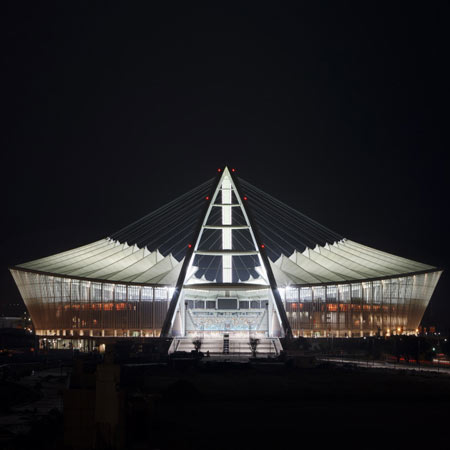
Moses Mabhida Stadium by GMP Architekten
Here's another stadium designed by German studio GMP Architekten (see our earlier story) for the 2010 FIFA World Cup starting next week.
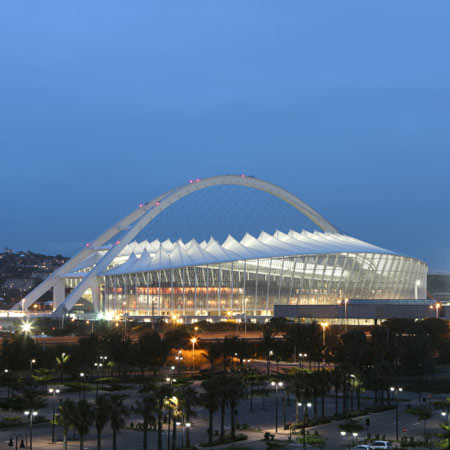
The Moses Mabhida Stadium is located in a sporting precinct in Durban on the shore of the Indian ocean and features a 105-metre arch that rises over the circular stadium.
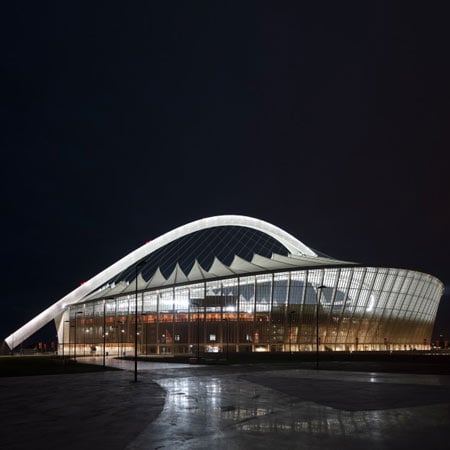
The arch is connected by cable system to the external edges of the roof, carrying the weight of the roof's inner membrane.
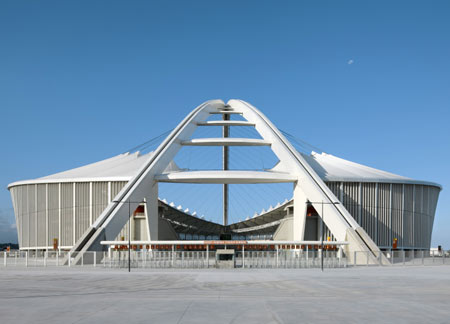
A viewing platform, where visitors can enjoy panoramic views of the city and ocean, sits on the apex of the arch and can be reached via cable car.
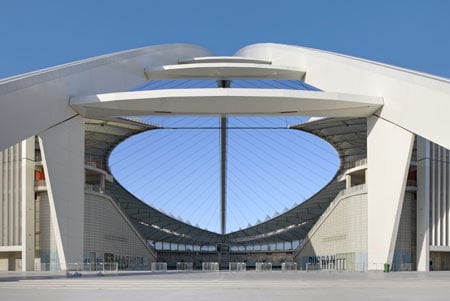
The 70,000 capacity stadium sits on an elevated platform, with a façade of perforated metal sheeting and a cable-tied canopy roof.
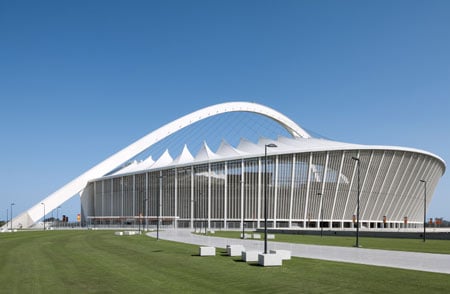
Photographs are © Marcus Bredt.
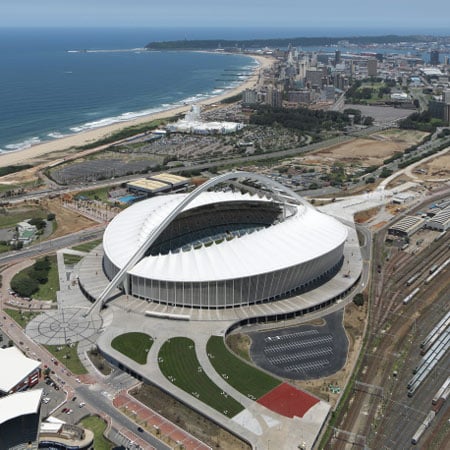
More 2010 FIFA World Cup Stadiums:
Soccer City by Boogertman Urban Edge + Partners and Populous
Nelson Mandela Bay Stadium by GMP Architekten
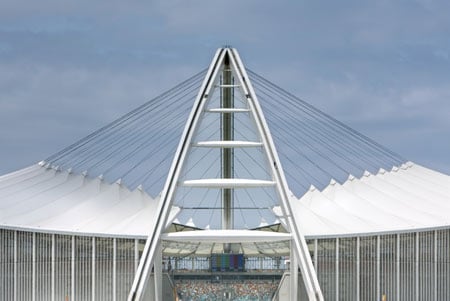
Here's some more information from the architects:
The Moses Mabhida Stadium, Durban
In its competition brief of 2006, the city of Durban invited designs for a multi-functional stadium for 70,000 to 85,000 spectators that would become an architectural icon and city landmark.
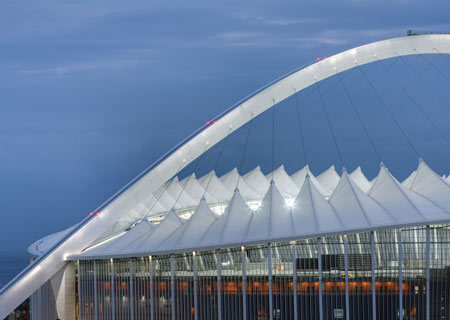
Our Ibhola Lethu Consortium won the competition to build the new Durban stadium, and was subsequently responsible for the design and the management of construction.
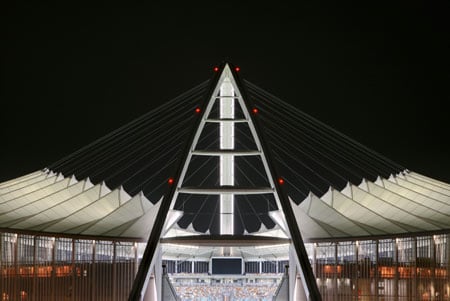
This project group consisted of a total of 32 South African architectural firms plus German partners von Gerkan, Marg and Partners (gmp) as consultant architects and Schlaich, Bergermann und Partner (sbp) as conceptual structural engineers.
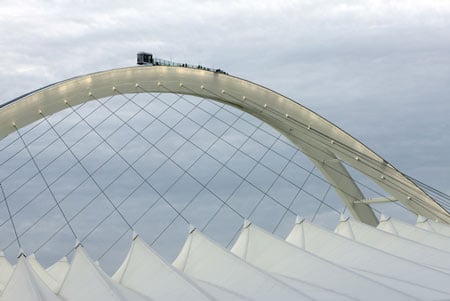
The Moses Mabhida Stadium is situated on an elevated platform in the central sports park on the shore of the Indian Ocean, and is accessed from the city and station via a broad flight of steps.
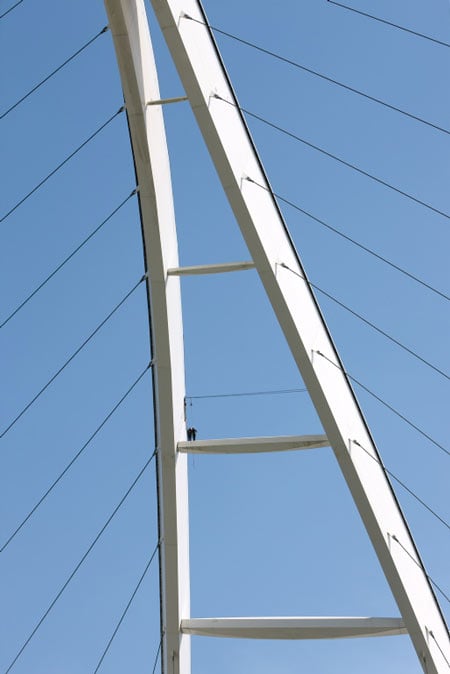
A 105m arch rises high over the stadium as a landmark visible from afar.
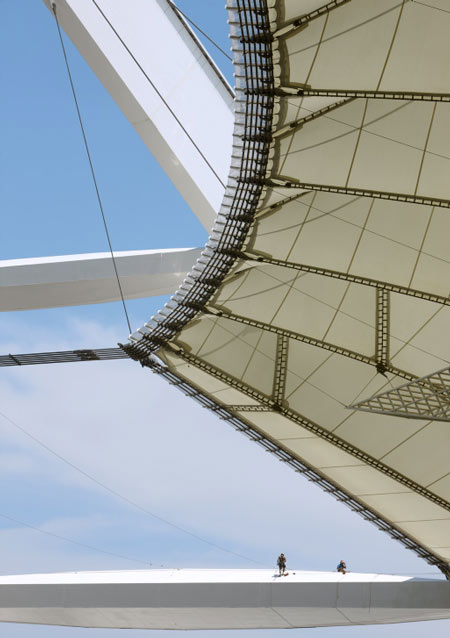
The main entrance at the south end of the 1.5km long linear park symbolizes the stadium’s gateway to the city, and is formed by the bifurcation of the huge arch.
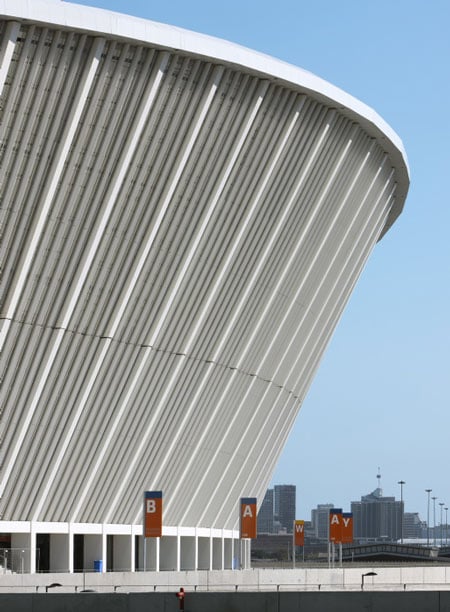
At the northern end, a cable car transports visitors to the ‘Skydeck’ at the apex of the arch.
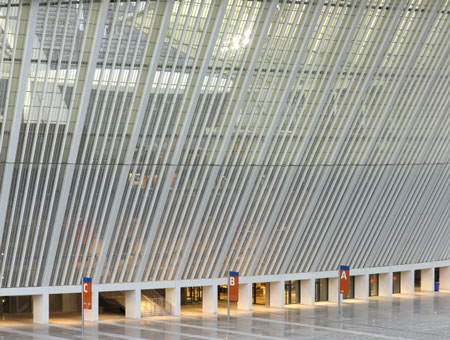
From here, you get a panoramic view of the city and the Indian Ocean.
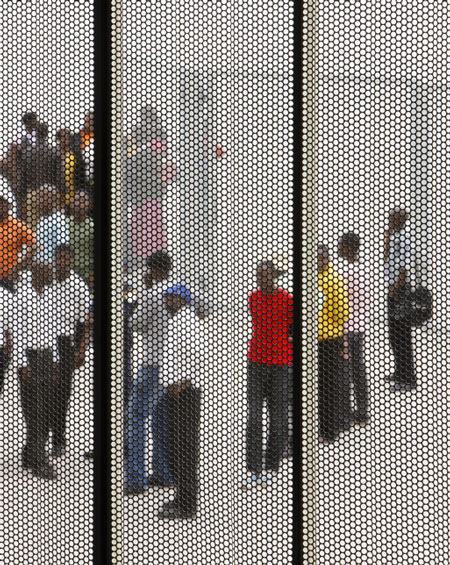
The arch flags the presence of the new stadium, making it an evocative icon on Durban’s urban skyline, interpreted by the multi-ethnic population as a unifying rainbow and, seen from above, a representation of the national flag.
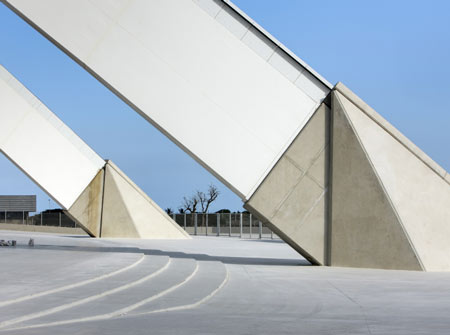
For the 2010 World Cup, the stadium will be fitted with seating for 70,000 spectators.

Afterwards, the number will be reduced to 56,000, but can be temporarily increased to as many as 85,000 for major events.
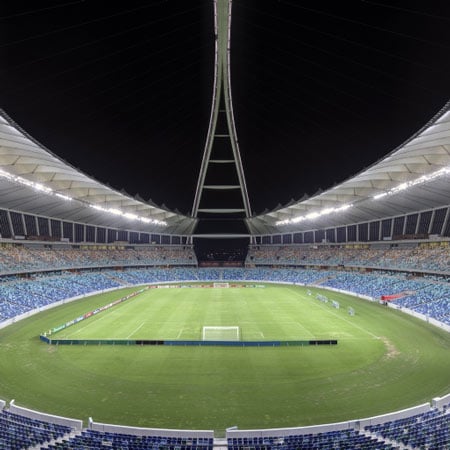
The multi-purpose stadium not only meets FIFA requirements but can also host the Commonwealth Games or Olympic Games.

The building offers excellent conditions for participants, journalists and spectators, with VIP facilities, the President and Ocean Atriums (both over six stories high), clubrooms and 130 spectator boxes.
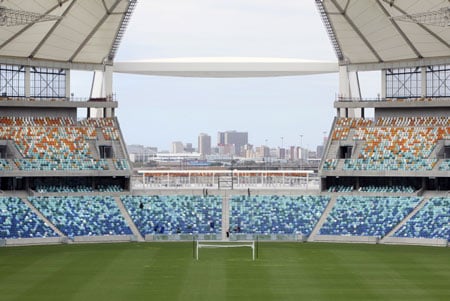
The shape of the bowl results from the interaction of the circular roof structure with the triple-radius geometry of the arena.
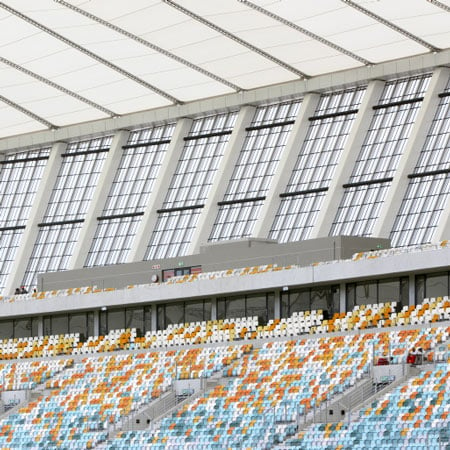
The great arch carries the weight of the inner membrane roof.

The unusual geometry of the cable system is derived logically from the structure.

Radial prestressing cables are attached to the external edge of the roof all round the stadium and the great arch on one side and the inner edge of the roof on the other, thus forcing the latter into an almond shape.
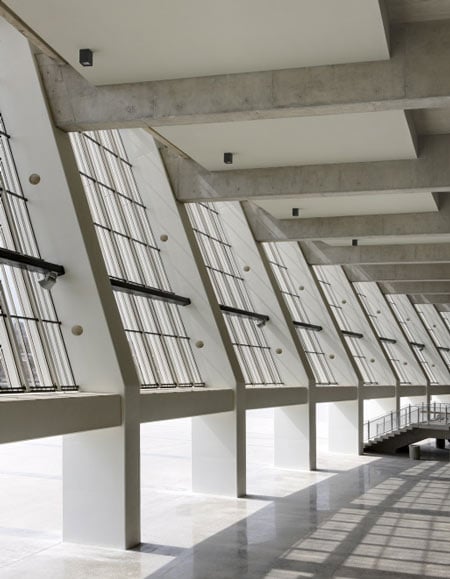
The PTFE-coated roof membrane admits 50% of the sunlight into the arena while also providing shade.
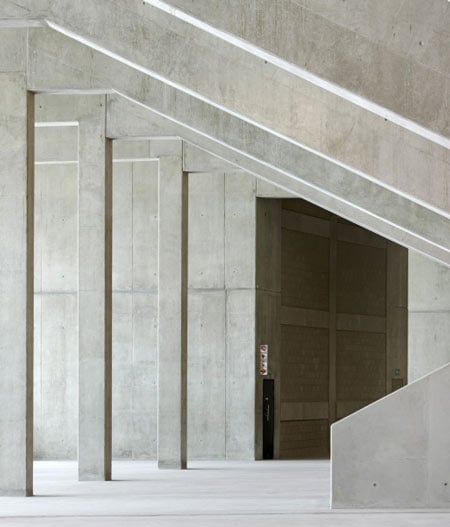
The perforated façade membrane of profiled metal sheeting rises to the outer edge of the roof, forming a lively pattern of light and shadow and offering glimpses of the interior, which lends the stadium a light and airy feel.
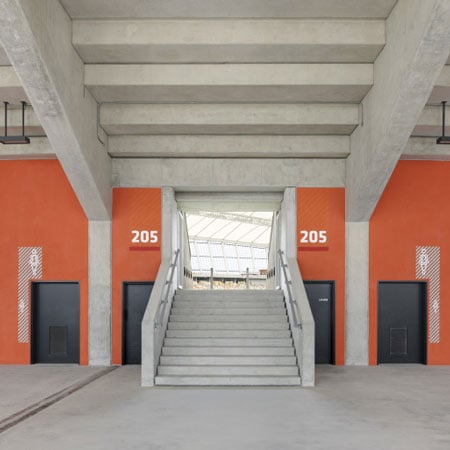
The compression ring and façade are carried on precast concrete columns below and hollow box steel columns above, the height and angle of inclination varying around the stadium from approx. 30m with a 90° inclination to about 50m with a 60° inclination.
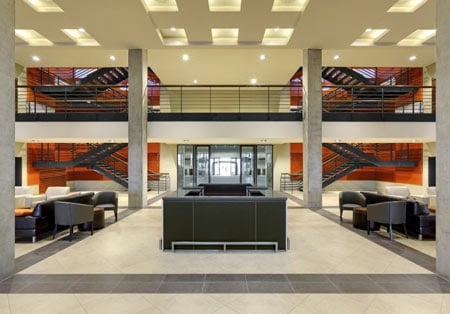
The façade membrane of perforated metal sheeting provides protection against driving rain, strong winds and direct sunlight without excluding the outside world.
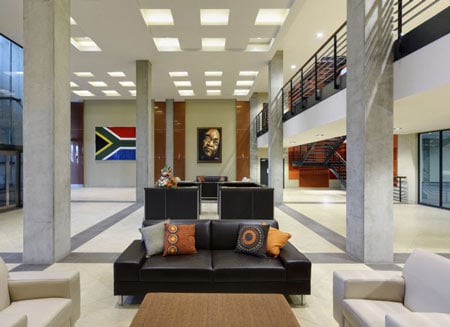
Inspired by the typical palette of colors of Durban’s coastal landscape, we chose a “maritime” color scheme for the seat shells, ranging from blue and green to ivory, paling from dark at the bottom to light on the top rows.
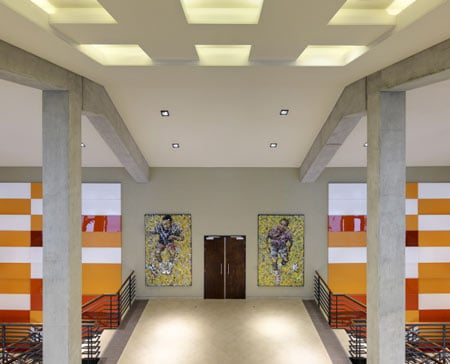
From a distance, the empty seats in different colors look already occupied, and make a cheerful sight.
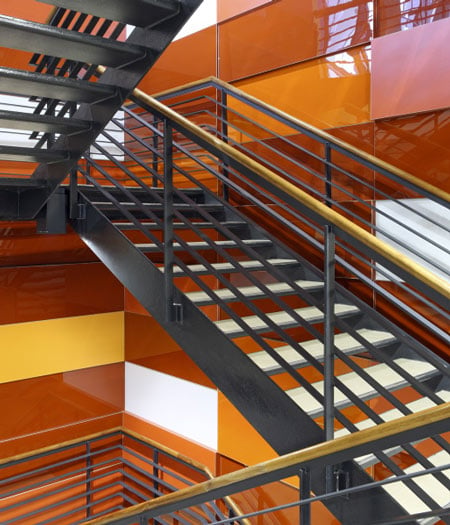
The artificial lighting of the stadium is not just functional, but also serves to illuminate the architecture, floodlighting some parts and spotlighting or highlighting others.
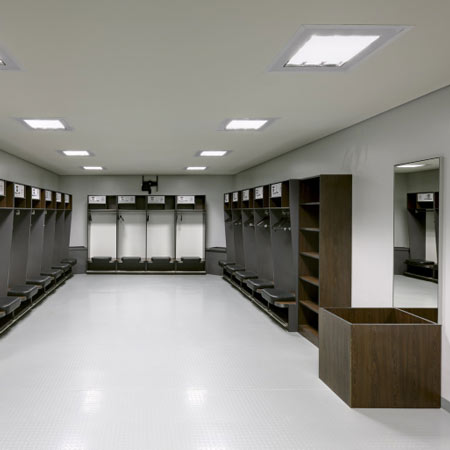
The roof surfaces on either side of the great arch are illuminated on top by a line of LEDs mounted directly on the arch.

The rest of the roof membrane is lit from below by floodlights installed on the catwalk.
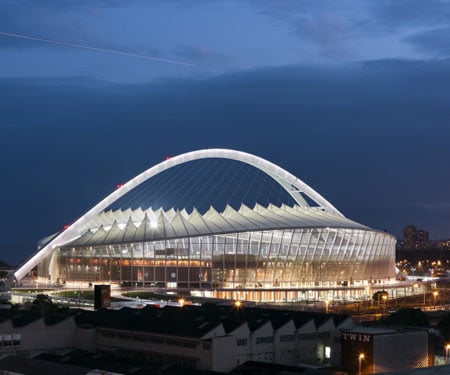
Atmospheric quality and functional efficiency combine to put Durban’s new icon in the right light.
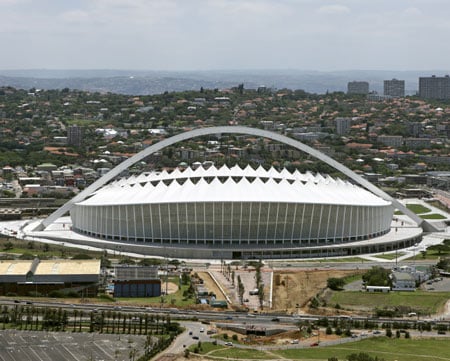
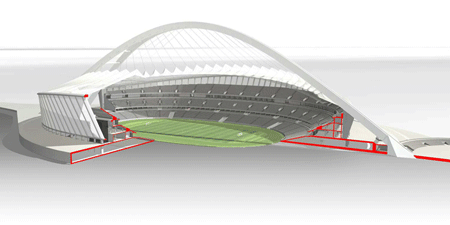
Click for larger image
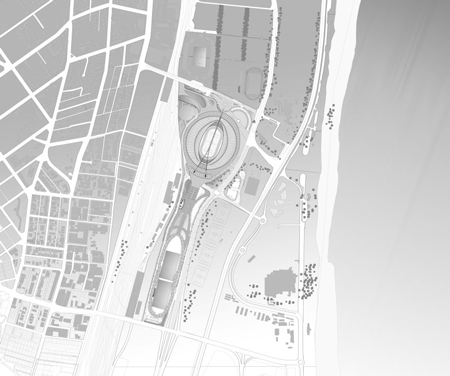
Click for larger image
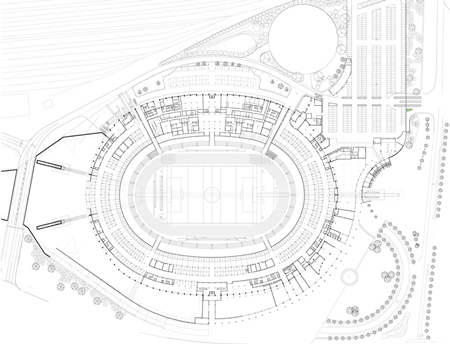
Click for larger image
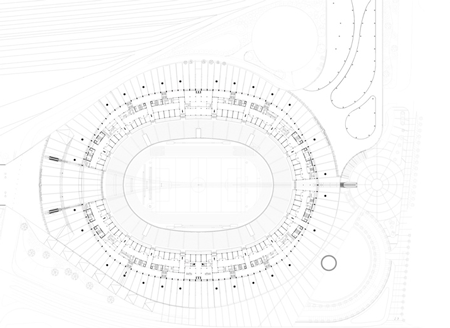
Click for larger image
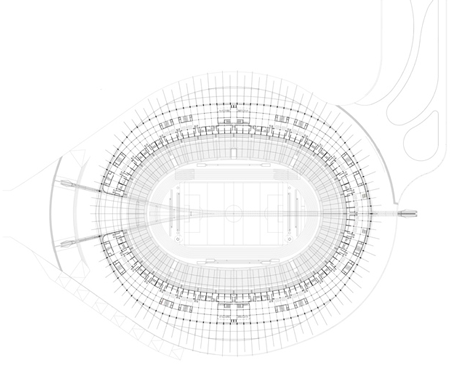
Click for larger image

Click for larger image
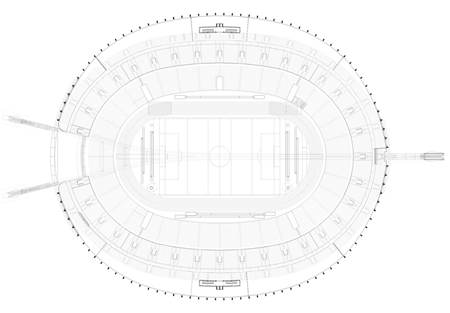
Click for larger image
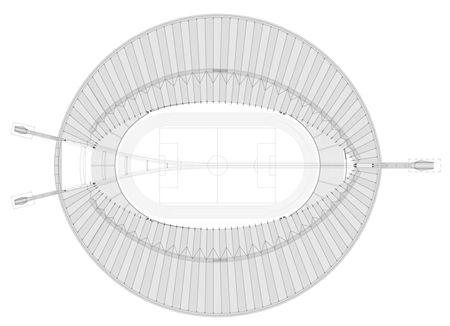
Click for larger image
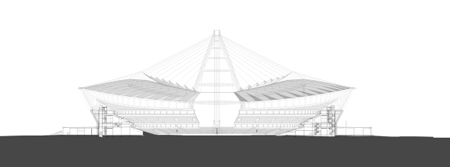
Click for larger image

Click for larger image
See also:
.
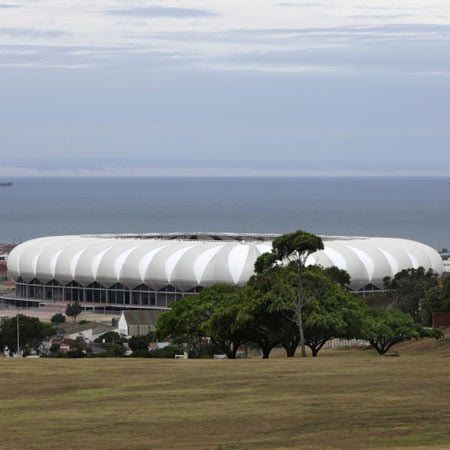 |
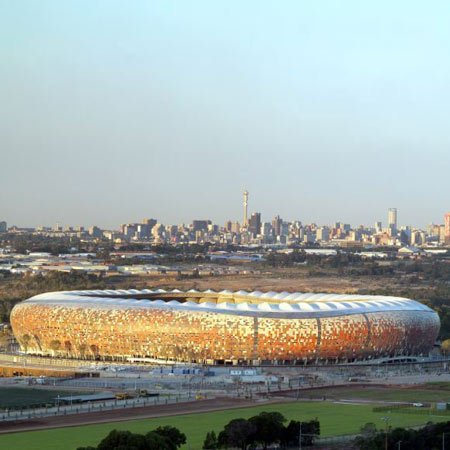 |
 |
| Nelson Mandela Bay Stadium by GMP Architekten | Soccer City by Boogertman + Partners and Populous | London 2012 Olympics stadium by HOK Sport |